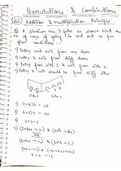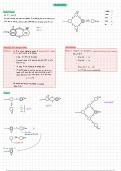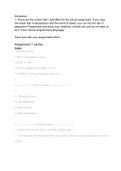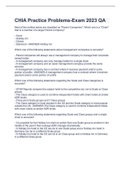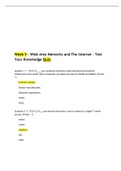Woordorder (word order)
S V1 T O M P V2 I
Verb, or the Verb goes Infinitive:
Who or Who or Where is
helping When is the How is the here if verb Why is the
what is what is the verb
verb, if verb being verb being 1wasa verb being
doing the being being
there is done? done? helping done? “Om
verb? “verbed”? done?
one. verb. ...te”
Also: You can start a sentence with ANY part of STOMPI, just keep the following in mind:
• The second thing in the sentence has to be verb 1
• If you start with a verb, your sentence is either a command or a question
• Starting with the OBJECT implies passive voice (lydende vorm) and special rules apply
Tye: verlede tyd (past tense)
Verb one becomes “het” and
the verb moves to the end of Sy sing mooi. Sy het mooi
Normal
the sentence (V2) and gets a gesing.
“ge”.
If you see the following
helping verbs, the helping
Sy kan ook dans.
verb will change, but nothing
else changes! Don’t move the Sy kon ook dans.
Helping verbs sentence around – simply
change the helping verb. Lara wil daar optree.
is –was Lara wou daar optree.
kan – kon
SASHTI NOTES 1
, wil – wou
moet – moes
sal – sou
The word “het” can be used as
a verb, which means “to
have.”
Sy het ʼn kitaar.
For example: Ek het vyf katte.
(I have five cats.) Sy het ʼn kitaar gehad.
“Het” as a
verb Just like normally, you add a
“het” in as verb 1 and you Taz het ʼn goeie stem.
move the original verb to the
end of the sentence BUT in Taz het ʼn goeie stem gehad.
this case the verb changes:
HET -> GEHAD
If the verb starts with these
letters, it still moves to the
Die twee vroue gesels lekker.
be- ge- her- end of the sentence, and you
Die twee vroue het lekker gesels.
er- ver- on- still put a “het” in as verb 1,
ont- mis- BUT you don’t add a “ge-“in Ek verstaan haar lirieke.
front of the verb. THIS IS ONLY Ek het haar lirieke verstaan.
TRUE IF THE VERB HAS MORE
THAN ONE SYLLABLE!
If there are two verbs in the
sentence and you can do both
at the same time (sit and Hy sit na die musiek en luister.
read), move both to the verb2 Hy het na die musiek gesit en
Two actions... space (separated by the “en”) luister.
and only the first verb will get
a “ge- “. Sy sing en praat graag.
Sy het graag gesing en gepraat.
If there are two verbs, but
they are done seperately
SASHTI NOTES 2

